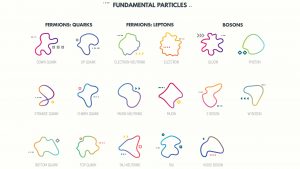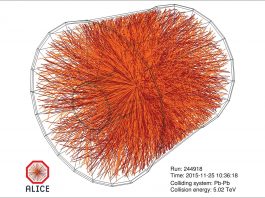At OPRA, we believe that the research we support can play a major role in making the Standard Model a better theory by paying special attention to the areas where it doesn’t provide consistent explanation.
AS any physicist observes, the first and foremost requirement from a theory is to be consistent with the realities of its domain. Too often we note that experimental findings which are inconsistent with a ruling theory are overlooked. We believe that these discrepancies are the most important aspects of a theory, and understanding them may lead to ground-breaking findings. The Association for Advancement of Research on Open Problems in Nuclear Physics & Particle Physics (OPRA)’s mandate is to attract research efforts towards solving some of the fundamental puzzles of physics today, namely experimental findings that are currently inconsistent with the ruling theory of particle physics. Over recent years, particle physics has achieved a lot of public attention, and researchers are relying on the Standard Model of particle physics, a theory which is the basis of almost every research in this field.
However, there are dozens of experimental results which do not align with the Standard Model. Our goal is to close these gaps, and help finding explanations to these phenomena within the existing theory of the Standard Model, or by extending or replacing parts of it with improved explanations.
The Standard Model
The Standard Model of particle physics categorises 17 fundamental particles into either fermions (matter particles) and bosons (force carriers), and it also explains how the basic building blocks of matter interact in relation to three fundamental forces: electromagnetic, weak, and strong. The Model shows that there are currently 12 named fermions and five named bosons:
There are four fundamental forces of nature, however only electromagnetism, strong and weak force are included in the Standard Model. The Standard Model claims that each force reacts differently between particles and has a different associated gauge boson:
- Electromagnetic force – a charge reaction occurs when an interaction is mediated by photons;
- Strong force – a reaction of colour occurs when an interaction is mediated by gluons; and
- Weak force – a reaction of flavour occurs when an interaction is mediated by the W and Z boson.

Using coherent mathematical structures to overcome problems
At OPRA, we see ourselves as playing a very important and unique role. We believe that physics should be consistent and describe what we observe in experiments. We support works which aim to improve the Standard Model as a theory that explains experimental findings in its domain using coherent mathematical structures.
Some of the problems that are still waiting for answers include:
- The Nobel Prize in Physics 2015 was awarded jointly to Takaaki Kajita and Arthur B McDonald for the discovery of neutrino oscillations, which shows that neutrinos have mass. However, the mathematical structure of the Standard Model assumes that neutrinos do not have mass;
- Photons with high energy interact with protons and neutrons much harder than expected. This was found in the early 60s. We are still waiting for a coherent explanation for that; and
- The EMC effect attracted a lot of attention when it was discovered in 1983, but a satisfactory explanation is yet to be found.
And the list continues. We collected nearly 30 topics that we would like to support and divided them into several groups. The list is on our website, and if we found other gaps in the theory, we would consider adding these areas as well.
Understanding the basic laws of the three fundamental forces (electromagnetic, strong and weak) will enable us to explain more complex laws in physics. This is what OPRA is about.
Ofer Comay
Co-Founder
The Association for Advancement of Research on Open Problems in Nuclear & Particle Physics (OPRA)
https://oprassn.org/
Please note, this article will also appear in the second edition of our new quarterly publication.









